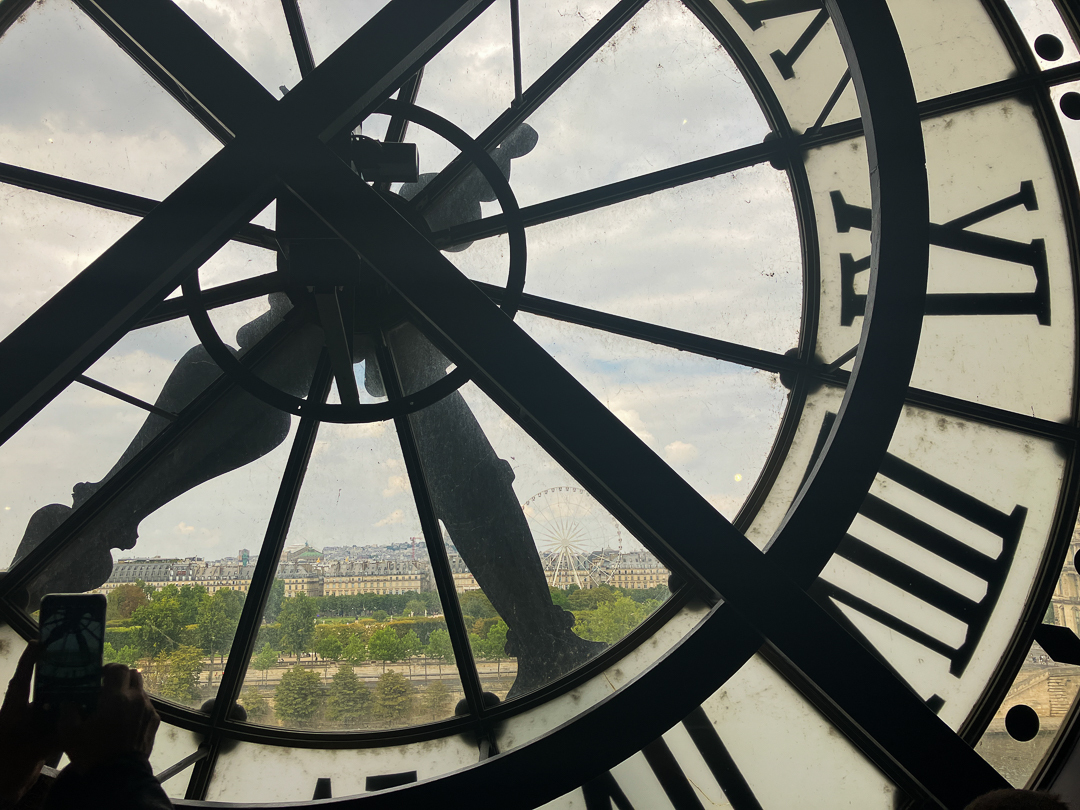
France Post 3 - Famous Places, Art, and Gold
Eating scrumptious French food and wandering the urban fabric of Paris was marvelous. The other half of being in Paris was seeing its famous cultural treasures, which I did with my sister and brother-in-law.
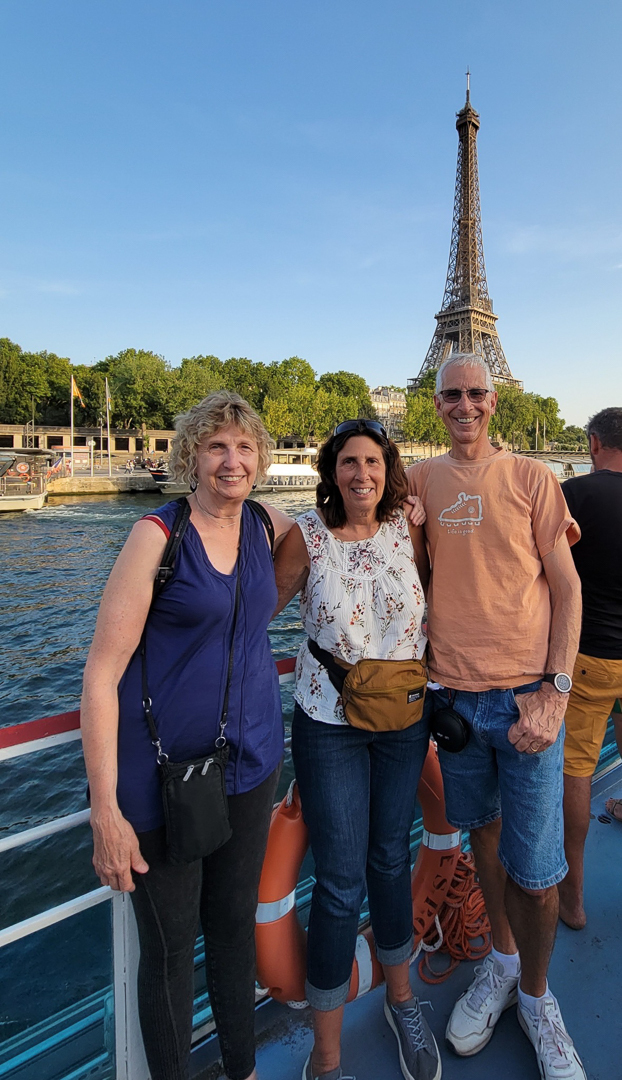
Yes, yes, the Eiffel Tower. I did not go up into the tower but caught a different view of it in a stormy sky. (It really looked like that, none of my sky-enhancement tricks were used here.)
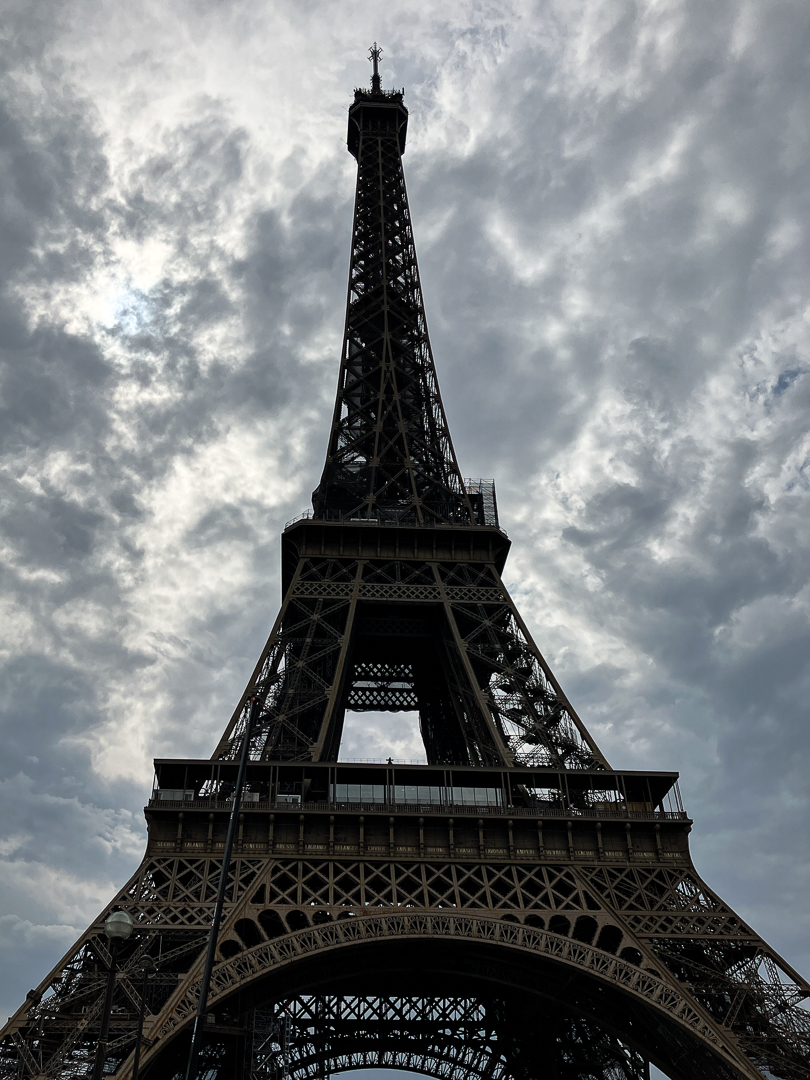
Versailles was huge and magnificent. I could only digest and photograph pieces of it.

The opulence of Versailles was a stark contrast to everyday life in Paris. Gold everywhere! Fine paintings framed in decorative gold filled every ceiling in every room we were shown.
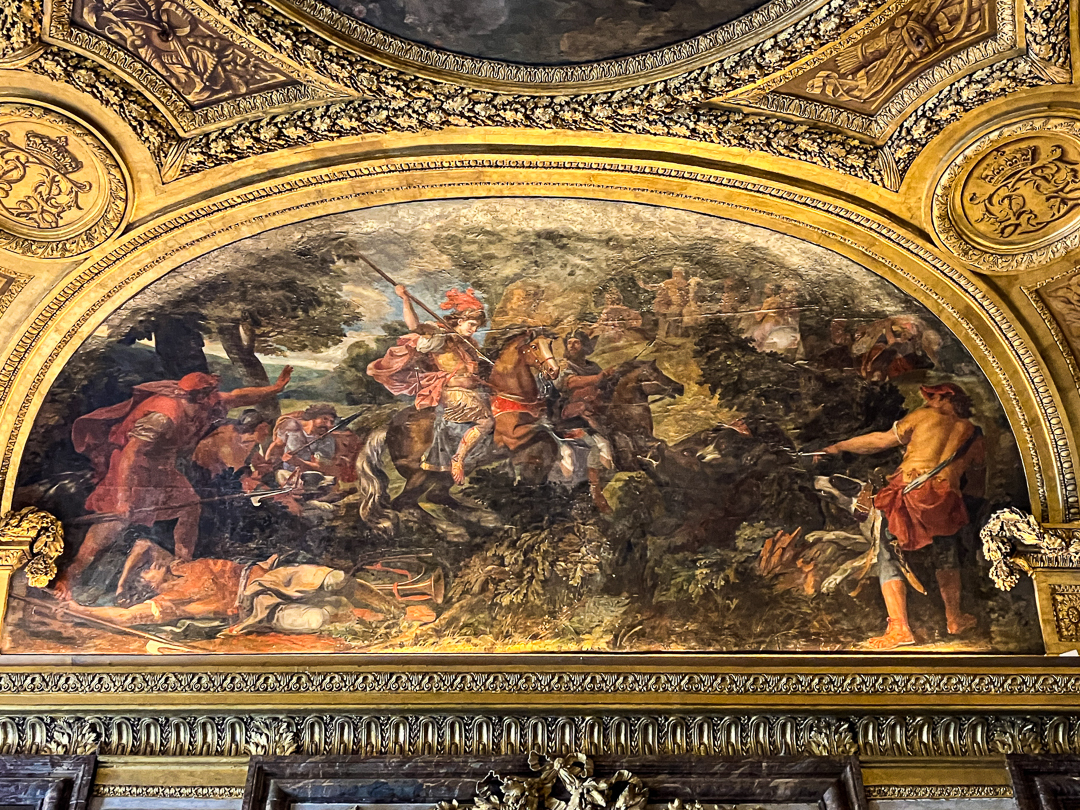
There was even more gold that was no longer on display. For example, we were told that King had a solid gold ladder to help him climb into his high bed. The Queen's bedroom showed one of a Queen's more difficult duties: giving birth in public. On delivery day, her room would be open to whatever guests happened to be in the palace or were specially invited. Talk about not being at your best for company!
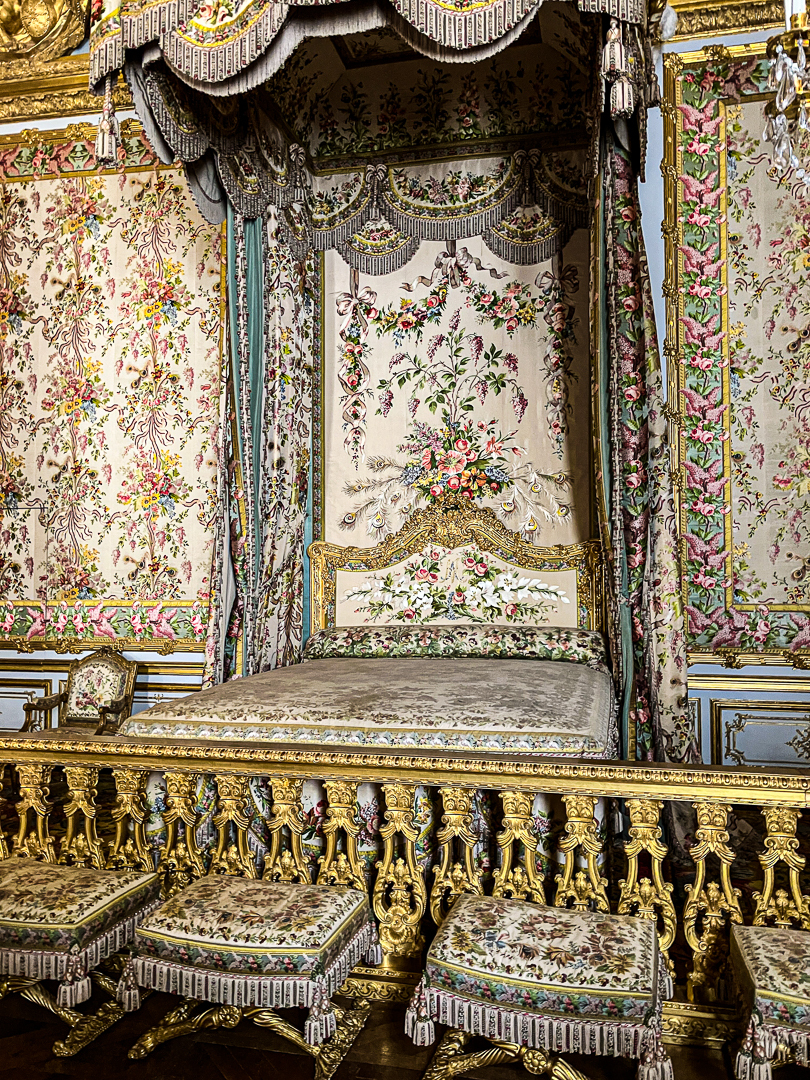
There was even more gold in the Hall of Mirrors. This is a 240-feet-long hall lined with mirrors where courtiers would parade and admire themselves and each other. And, of course, the long hall was lined with even more gold.
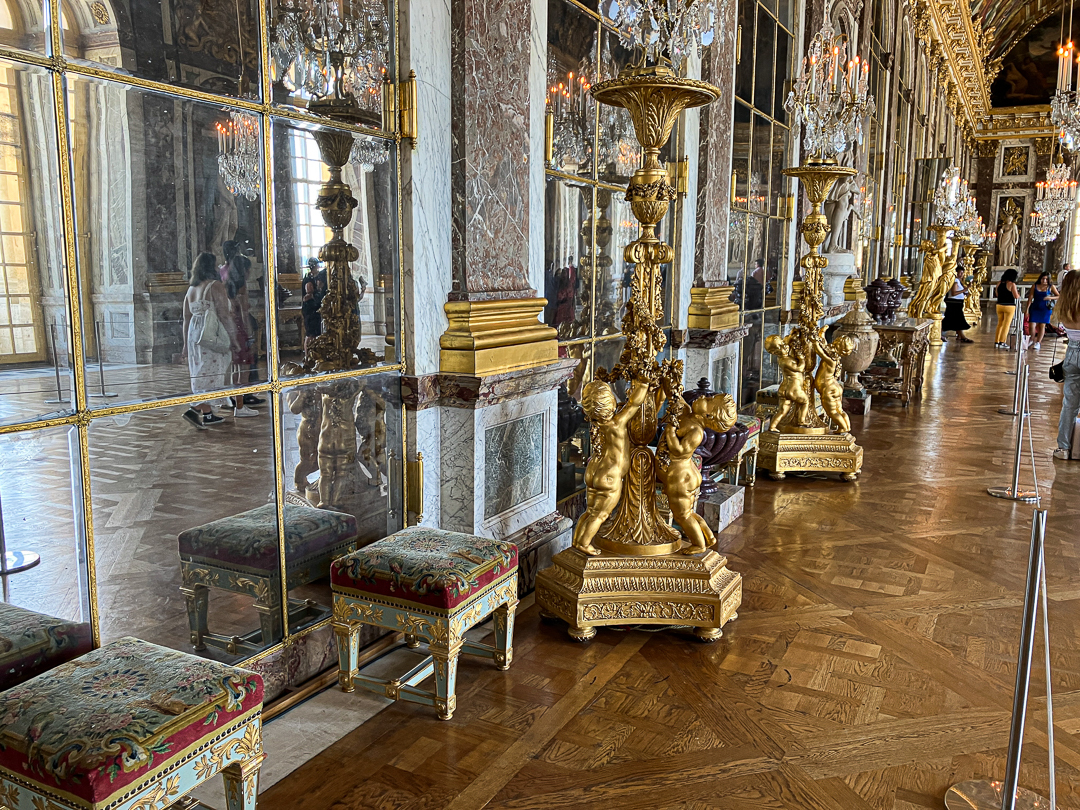
My sister and I looked at each other and had the same thought: no wonder the people rebelled in the French Revolution. The royals' remoteness from how their people lived was on vivid display here. “Let them eat cake” was a perfect summation of their oblivion.
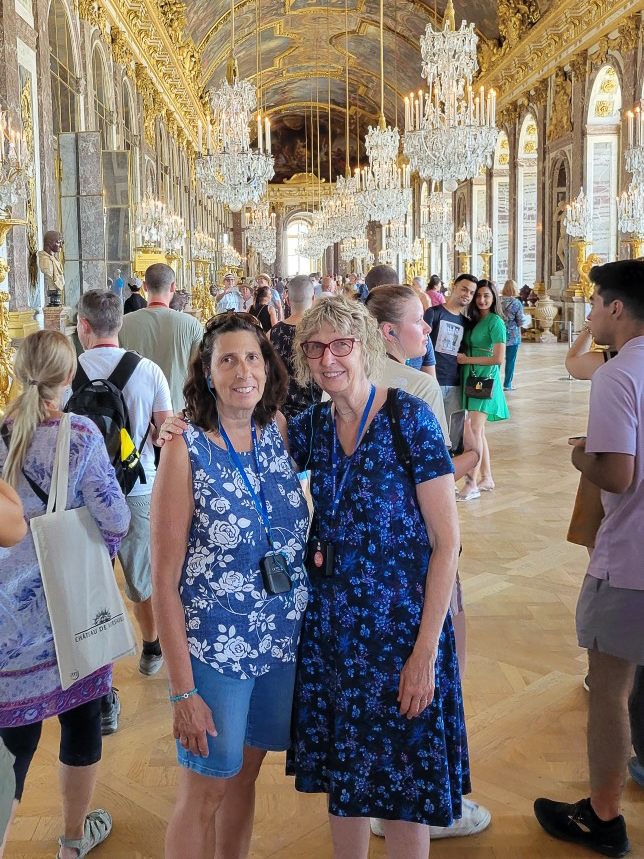
I walked along the Seine to visit the Museé d’Orsay, which was once a train station. There are paintings, sculptures, photographs, and decorative arts from the 19th century. It has works by many of my favorite artists. Musée d'Orsay has the largest collection of Impressionist art in the world.
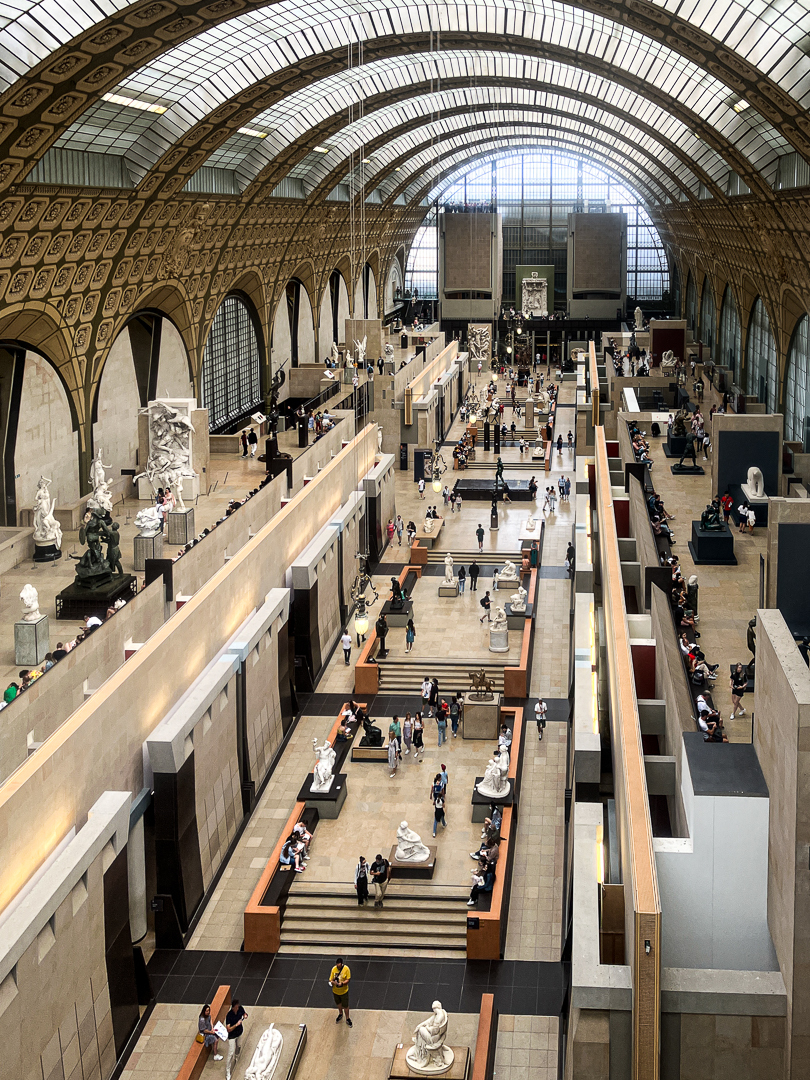
I paid the most attention to the kinds of paintings that inspire me as I photograph. I focused on art that showed everyday people, natural expressions, and sensitive use of color.

Morning coffee – some things don’t change.
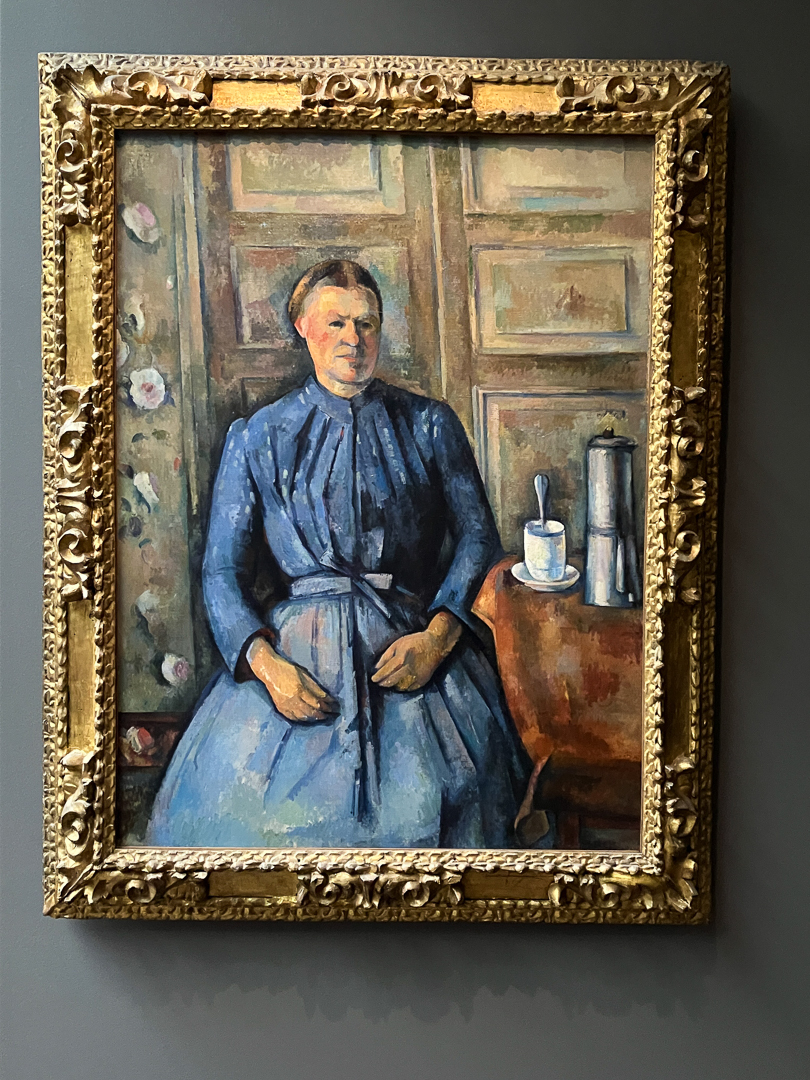
The Floor Scrapers by Gustave Caillebotte also shows real people. When Caillebotte submitted this painting for the official exhibition of the Academy of Fine Arts in Paris it was rejected. Work that showed the lives of regular working-class people was not welcome. Critics called it “crude” and “anti-artistic”. He then joined the Impressionists, who were becoming a new, radical force in the art world of the time.
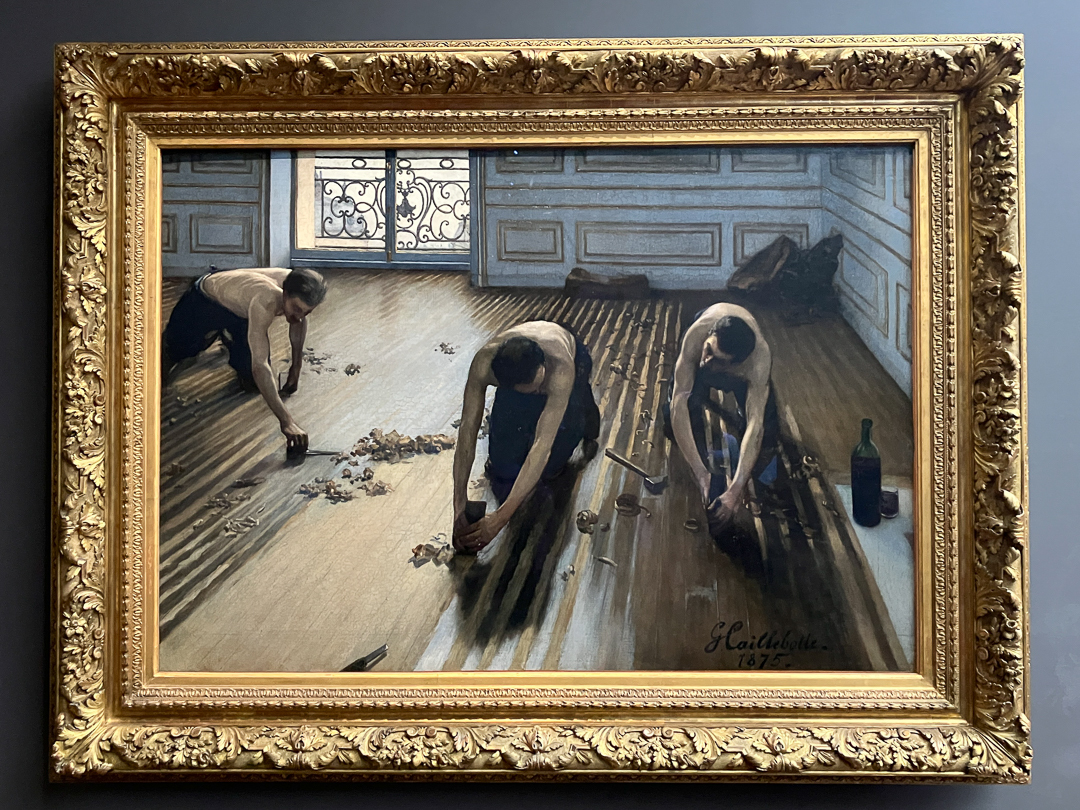
I wandered into rooms with paintings from the Symbolism movement, which I hadn’t known much about before. The works were fascinating. Symbolism was described at the museum as follows:
“More than simply an artistic movement or style, symbolism refers to artists who explored the human interiority in its multiple dimensions: the emotional, psychological, dreamlike, spiritual, and sometimes occult. Odilon Redon (1840-1916) was one of its central figures in France.”

Haven’t you felt this way sometimes?
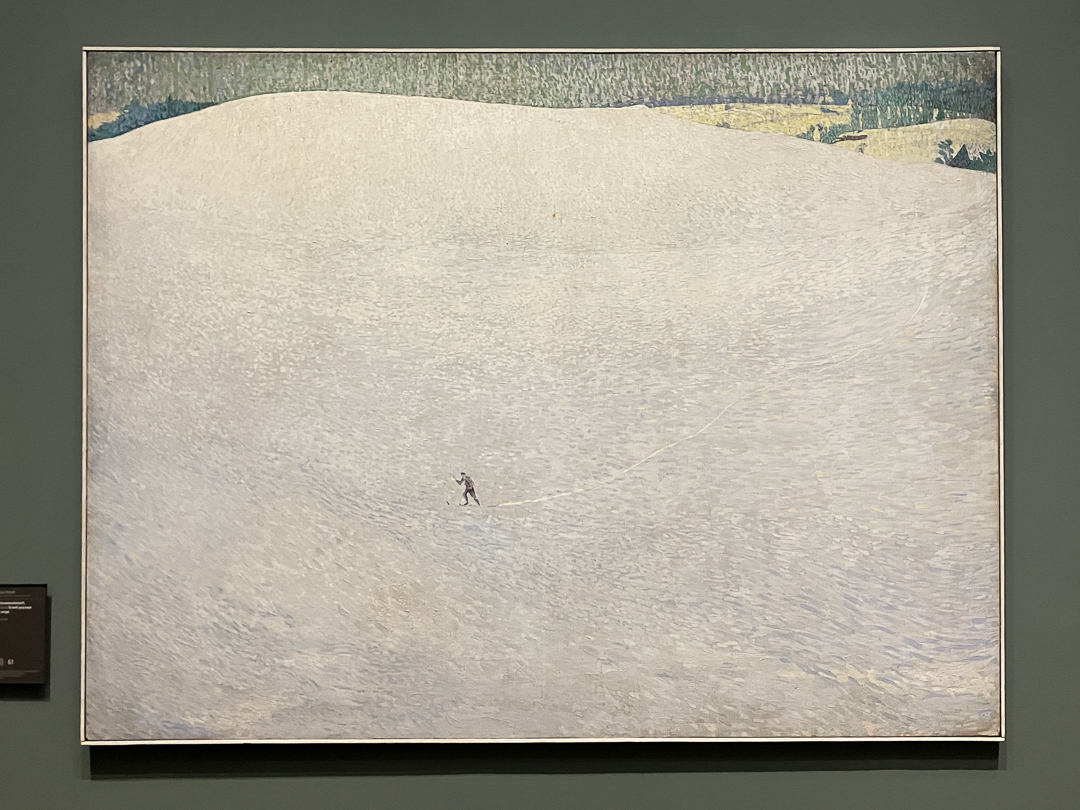
But I couldn’t resist people-watching at the museum . . .
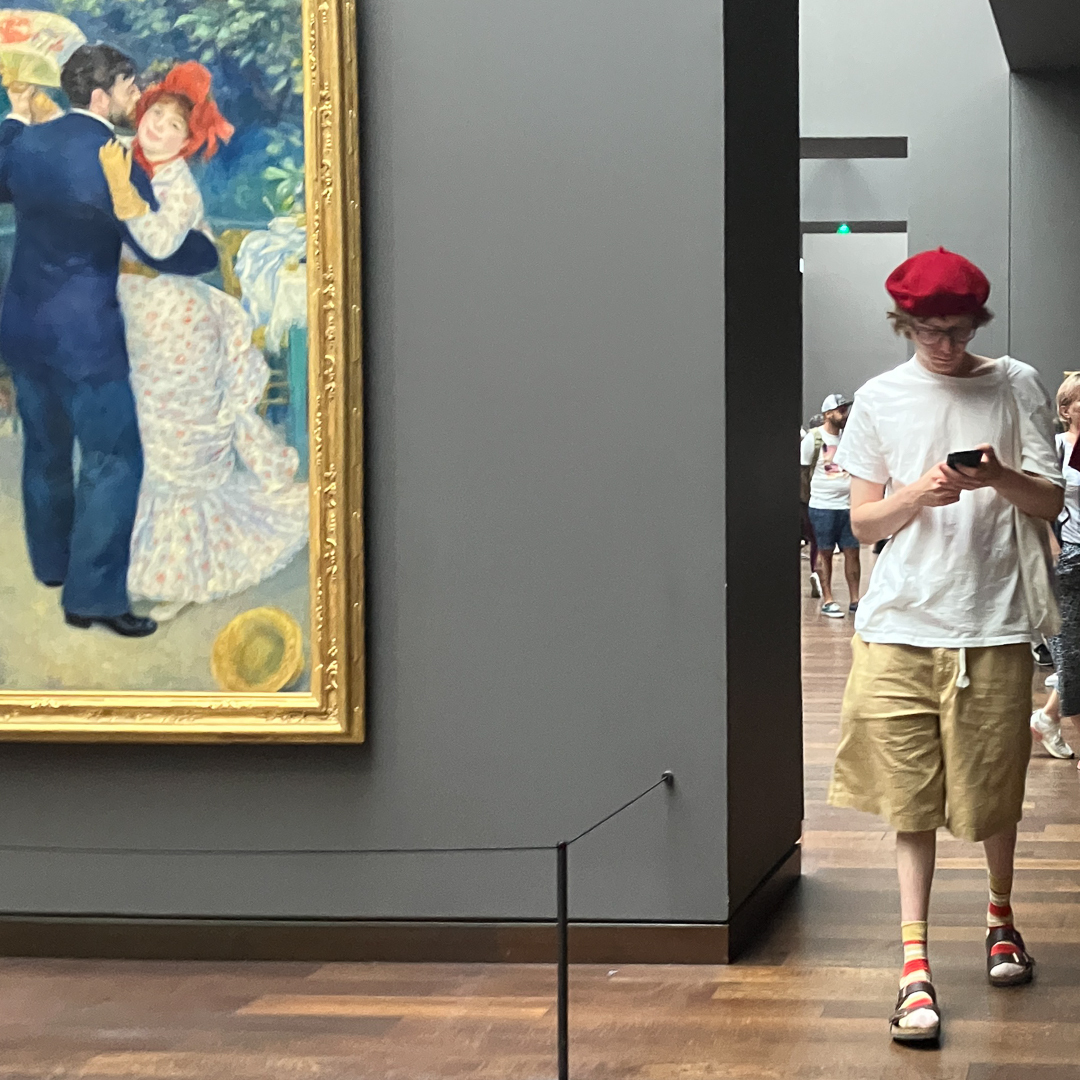
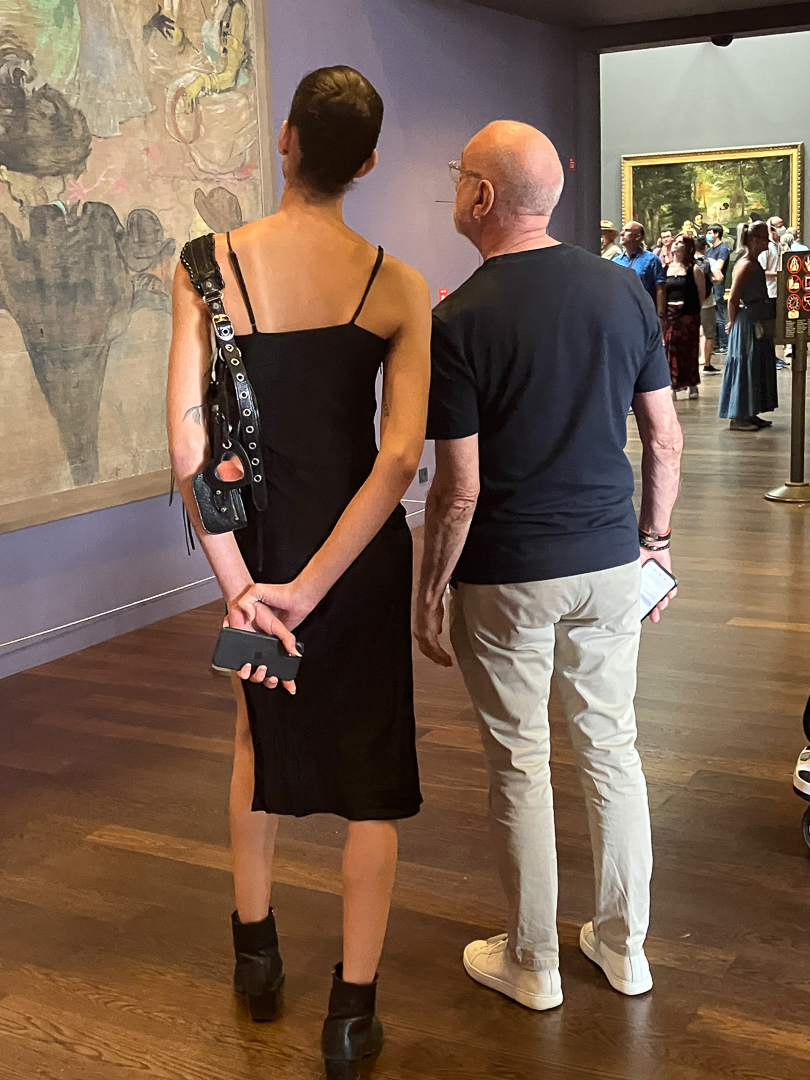
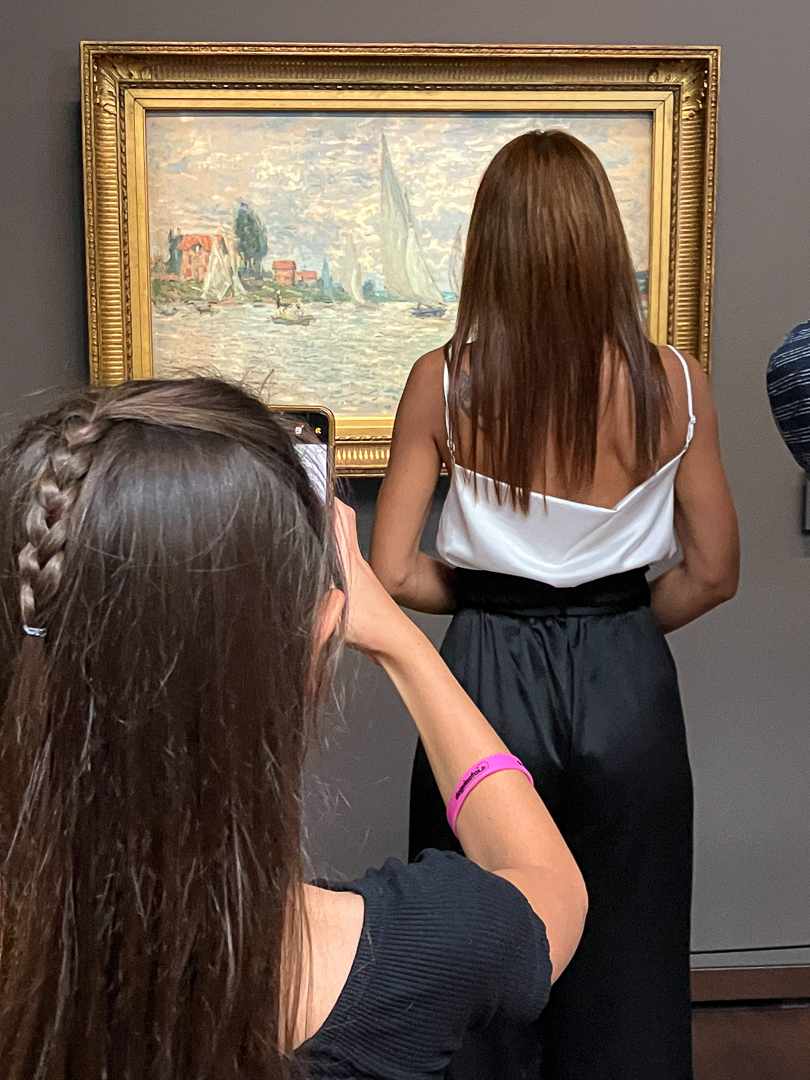
Paris, with its cultural treasures and sheer beauty, deserves its reputation as one of the great cities of the world. However, it was time for my next stop and to experience the contrast between Paris and another beautiful, historic town in the south of France.
